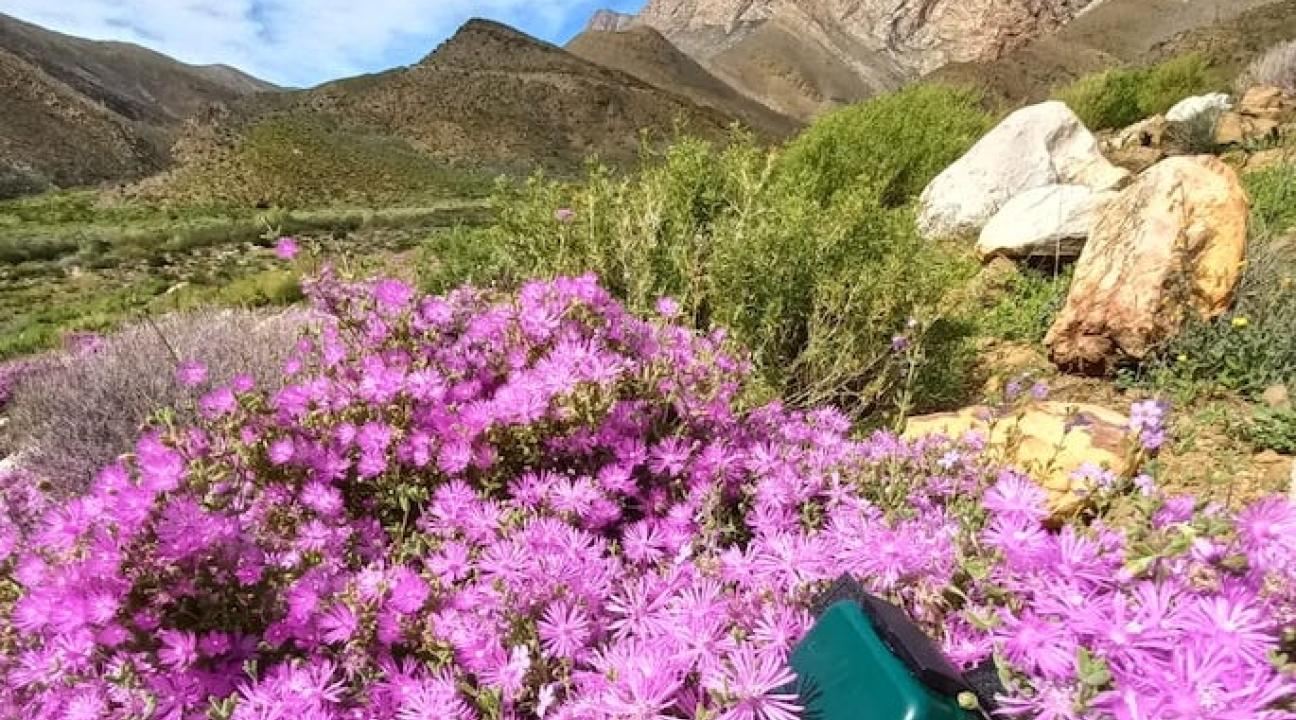NASA funds Professor Matt Clark’s biodiversity work in South Africa
When South African birds, frogs, and insects make calls, Dr. Matthew Clark is listening to what they say.
Clark, a Sonoma State professor and director of the Center for Interdisciplinary Geospatial Analysis, is principal investigator for BioSoundSCape, one of 20 projects selected for NASA funding under the larger umbrella of BioSCape (www.bioscape.io), a biodiversity-focused research project in the Cape region of South Africa. The area is a global biodiversity hotspot, with the richest temperate flora and the third-highest marine endemism (native species) in the world.
BioSCape features scientific teams that are linking satellite and airborne data with field observations to better understand the Cape’s biodiversity, with the resultant information supporting the decision-making needs of stakeholders in the region and internationally. BioSoundSCape is one of two sub-projects focused on animal diversity – specifically bird, frog, and insect species that emit sounds. Its goal is to measure ground-based animal diversity as recorded in local “soundscapes" and scale these data as regional maps based on habitat properties acquired using advanced NASA sensors.
BioSoundSCape is a collaboration between the US and South Africa, supported by the United States government (NASA), the South African government (National Research Foundation, NRF), the South African Environmental Observation Network (SAEON), and the United Nations Educational, Scientific and Cultural Organization (UNESCO). Clark recently was awarded $99,229 in additional funds from NASA for artificial intelligence applications, bringing NASA funding for BioSoundSCape to a total of $591,334.
"BioSoundSCape is undoubtedly one of only a handful of projects around the world that targets biodiversity surveys at multiple scales, with data from a variety of technologies, and that involves a large team of collaborators from multiple institutions in two continents." said co-Investigator Dr. Leo Salas, Principal Quantitative Ecologist at Point Blue Conservation Science.
Nearly a million minutes of recordings were captured by low-cost autonomous recording units called AudioMoths from about 550 sites in a variety of soundscapes visited during both the wet and dry seasons. A total of 884 birds were identified through field observations.
Deployment of the Audiomoths and field observations were done by Cape Nature rangers and citizen-scientist volunteers led by collaborators at BirdLife South Africa, CapeNature, the South African National Biodiversity Institute (SANBI), and Stellenbosch University.
Relating the soundscape data to the bird observations was originally to be done with a rapid statistical comparison of sound diversity to field-based observations of birds and frogs. However, Clark and his group applied for and received funds from NASA to build a custom AI model that could scan recordings and automatically identify bird, frog and insect species in the Cape region, thereby providing virtual counts of species making sounds.
They teamed up with WildMon, a non-profit that specializes in creating AI-powered tools to gather biodiversity information, then used tools in Arbimon to match the collected sounds with species. From that process, a new AI model, based on the popular BirdNET model, was born with the ability to predict 70 species of birds, frogs and insects with an initial average precision over 90% across species.
To add a physical habitat layer to the Cape biodiversity picture, NASA’s Gulfstream aircraft flew thermal imaging, imaging spectrometers, and a laser scanner (lidar) across large swaths of the Cape region as field teams collected data on land, streams, lakes, and the sea. This collected habitat data will be overlaid and compared with that of AI-detected animal diversity and its effect on soundscapes in general.
“Through BiosoundSCape’s fusion of cutting-edge remotely-sensed habitat characterization and scalable animal observations, we hope to unlock secrets of plant-animal interactions and drive biodiversity preservation forward,” said BioSoundSCape co-Investigator Dr. António Ferraz , NASA Jet Propulsion Lab.
This material is based upon work supported by NASA under award numbers 80NSSC22K0830 and 80NSSC23K1459. Any opinions, findings, and conclusions or recommendations expressed in this material are those of the author(s) and do not necessarily reflect the views of NASA.









